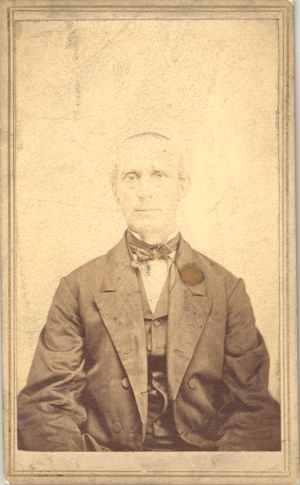
In 1997, a battle ensued over a small stucco house dwarfed by the state buildings surrounding it near the State Capitol in St. Paul. By then, the house seemed old and had been converted into an office of the state’s criminal justice system. When the Dahl family built it in 1858, however, it was the last of nearly 1,500 working class homes constructed in the neighborhood. At its construction, it cost $300 and had a full basement but no kitchen. This was added in 1886.
This modest home had something important in common with “one of the finest residences in town.” Two years earlier, H.M. Rice, one of Minnesota’s first pair of U.S. Senators, had hired the same carpenters to build his mansion — Ireland & Donovan. In addition to homes, modest and opulent, Richard Ireland also contributed to the construction of the Catholic Block, a commercial building on St. Paul’s Third Street near the Mississippi River.
Ireland was tall, lean, and walked with a jerky motion. He always spoke and moved quickly. He had come to St. Paul as a refugee of the Irish Potato Famine in 1851 with his family, but that was not the beginning of his troubles. Ireland had six children of his own, and in the early years of the famine, he had adopted his sister’s four children when they were orphaned. Hoping to create a welcoming home for his family, Richard had come to America with his oldest nephew in the winter of 1848 to 1849 and sent for his family later that year. After a time in Burlington, Vermont, and Chicago, they settled in the bustling frontier town of St. Paul.
Although there were already 18 carpenters in town, Richard quickly made a name for himself. He settled his own family in the heart of town, building a home at 68 W. Fifth Street across from Rice Park. In addition to plying his trade and running a business, Ireland became a figure of the civic community, often serving as a juror, becoming deeply involved in Democratic politics and even running for office. Despite having limited formal education, he succeeded as a pioneer.
His children, biological and adopted, went on to become some of the best-known figures in St. Paul. His eldest nephew and adopted son, Thomas Howard, was at one time or another a school board member, county commissioner, municipal judge, chairman of the Democratic Committee and Register of Deeds of Ramsey County. His daughter Ellen and her cousin Ellen Howard joined the Sisters of St. Joseph of Carondelet, later becoming leaders of the religious community. His oldest biological son, John, would become a priest and then the first archbishop of St. Paul. All credited their vocations, in part, to the deep devotion Richard and his wife, Judith, had to their faith. They credited their love of Irish lore to Richard’s passionate telling of the tales of Ireland’s heroic kings and warriors.
Richard Ireland died in 1887, but the William Dahl house is still standing. Instead of being demolished, it was restored as a single-family home and moved to the West Seventh neighborhood in St. Paul.
Luiken is a Catholic and a historian with a Ph.D. from the University of Minnesota. She loves exploring and sharing the hidden histories that touch our lives every day.




